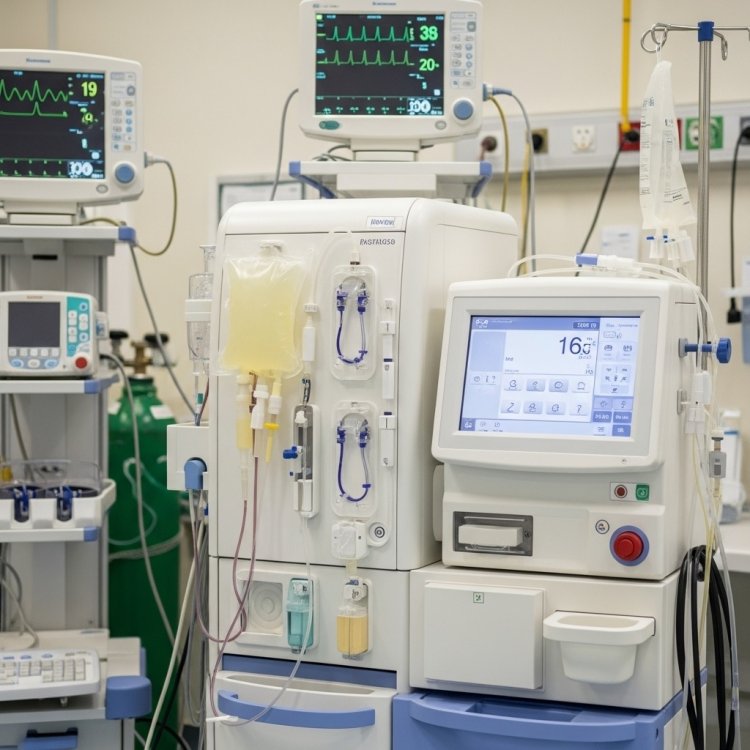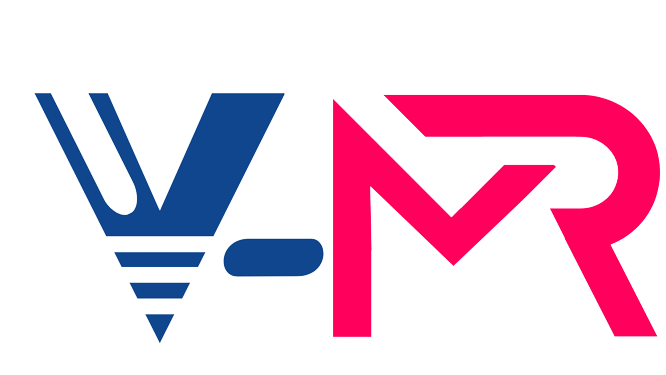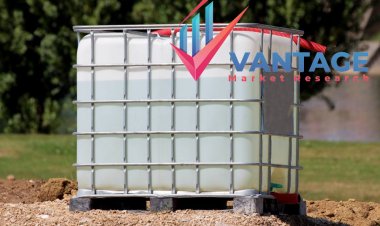Apheresis Equipment Market: A Deep Dive into Technology, Growth, and Future Trends
Explore the dynamic Apheresis Equipment market, projected to reach $5.35B by 2030. This in-depth analysis covers market drivers, regional insights, key segments, competitive landscape, and the latest technological advancements shaping modern medicine.

The Unseen Engine of Modern Medicine: A Comprehensive Look at the Apheresis Equipment Market
In the sophisticated world of modern healthcare, some of the most life-altering technologies operate quietly behind the scenes. Apheresis equipment is a prime example. This remarkable technology, which involves separating whole blood into its individual components (plasma, platelets, white blood cells, and red blood cells), has evolved from a niche procedure into a cornerstone of treatment for a vast array of chronic and acute conditions. Whether it's collecting life-saving platelets for a cancer patient, removing harmful antibodies in an autoimmune disorder, or enabling the very latest in cell-based therapies, apheresis is the critical link. This article delves into the dynamic and rapidly expanding global market for apheresis equipment, exploring its current valuation, the powerful forces driving its growth, the key players shaping its future, and the innovations that promise to redefine patient care in the years to come.
Key Takeaways
- Explosive Market Growth: The global apheresis equipment market is on a significant upward trajectory, projected to reach USD 5.35 billion by 2030 with a robust Compound Annual Growth Rate (CAGR) of 9.2%.
- Chronic Disease as a Primary Driver: The rising global prevalence of blood-related disorders, autoimmune diseases, and cancers is a major catalyst for the increased demand for both therapeutic and donor apheresis procedures.
- Technological Advancements are Key: Innovations in automation, membrane filtration, and device portability are making apheresis procedures safer, more efficient, and more accessible, fueling market expansion.
- Dominance of Disposables: Single-use disposable apheresis kits constitute the largest segment of the market, holding a 73% share. This segment is driven by the critical need for infection control and creating a consistent revenue stream for manufacturers.
- North America Leads, Asia Pacific Rises: While North America currently holds the largest market share due to its advanced healthcare infrastructure, the Asia Pacific region is projected to be the fastest-growing market.
- Strategic Competition: The market is led by industry giants like Terumo BCT and Haemonetics, with a competitive focus on strategic partnerships, automation, and integration with digital health ecosystems.
- Enabling Future Therapies: Apheresis is no longer just a treatment method; it is a critical enabling technology for cutting-edge personalized medicine, including CAR-T cell therapy and regenerative medicine.
Current Market Size and Forecast
The Global Apheresis Equipment Market is not just growing; it is thriving, reflecting its escalating importance in global healthcare. The market is projected to expand from its current valuation to an impressive USD 5.35 billion by 2030. This expansion is forecasted to occur at a vigorous Compound Annual Growth Rate (CAGR) of 9.2% from 2024 to 2030, a figure that significantly outpaces general economic growth and highlights the sector's vitality. This projection is not based on speculation but on a confluence of powerful, sustained trends. The core impetus behind this growth is the increasing global burden of chronic diseases. As populations age and lifestyles change, conditions such as cancer, autoimmune disorders (like myasthenia gravis and multiple sclerosis), and hematological diseases (like sickle cell anemia and leukemia) are becoming more prevalent. Apheresis offers a highly targeted therapeutic intervention for many of these illnesses, making it an indispensable tool in the modern clinical arsenal. Furthermore, the demand for blood components for transfusion medicine continues to soar. Apheresis allows for the collection of specific components, such as platelets or plasma, from a single donor in quantities that would otherwise require multiple whole-blood donations. This enhances the safety and efficacy of transfusions, a critical factor driving the adoption of apheresis technology in blood banks and donation centers worldwide. This robust growth forecast has significant implications across the healthcare ecosystem, signaling a period of intense investment in research and development, manufacturing expansion, and market penetration, ultimately promising more advanced and accessible therapeutic options for patients around the globe.
Market Drivers
The remarkable growth of the apheresis equipment market is propelled by a trio of powerful and interconnected drivers. First and foremost is the rising incidence of blood-related disorders and other chronic diseases. The global epidemiological landscape shows a clear upward trend in conditions that are directly managed or treated with apheresis. Hematological malignancies like leukemia require leukapheresis to reduce dangerously high white blood cell counts. Autoimmune diseases, where the body's immune system mistakenly attacks its own tissues, are increasingly treated with therapeutic plasma exchange (TPE) to remove harmful autoantibodies from the circulation. Furthermore, chronic conditions like sickle cell anemia are managed with red blood cell exchange apheresis to prevent complications like stroke and organ damage. This growing patient pool creates a direct and sustained demand for apheresis procedures, and consequently, for the equipment and disposables required to perform them.
Second, the market is being profoundly shaped by continuous advancements in apheresis technology and devices. Modern apheresis machines are a world away from their predecessors. Today's systems are highly automated, featuring intuitive user interfaces, pre-programmed protocols, and sophisticated safety mechanisms that minimize the risk of adverse events. Innovations like single-needle access enhance patient comfort, while the development of more efficient separation technologies—both centrifugation and membrane filtration—improves the yield and purity of the collected components. The integration of digital health features, allowing for data logging, remote monitoring, and seamless integration with Electronic Health Records (EHR), is further enhancing procedural efficiency and quality control. These technological leaps make apheresis safer for patients, easier for clinicians to perform, and more cost-effective for healthcare institutions, thereby lowering barriers to adoption.
Finally, the increased demand for specific blood component therapies is a critical driver. Modern transfusion medicine has largely moved away from whole blood transfusions in favor of targeted component therapy. Cancer patients undergoing chemotherapy often require platelet transfusions to prevent bleeding. Burn victims and patients with clotting disorders need therapeutic plasma. Apheresis is the most efficient method for collecting these components. A single plateletpheresis donation, for example, can yield a full therapeutic dose of platelets from one donor, which would otherwise require pooling platelets from six to eight whole-blood donors. This not only optimizes the blood supply but also significantly reduces the recipient's exposure to multiple donors, lowering the risk of transfusion-transmitted infections and immunological complications. This fundamental shift in transfusion practice ensures that apheresis remains a vital technology for blood banks and hospitals everywhere.
Regional Insights
The apheresis equipment market exhibits distinct characteristics across different geographical regions, reflecting varying levels of healthcare infrastructure, economic development, and disease prevalence. North America currently stands as the dominant force in the global market, holding the largest share of revenue. This leadership position is underpinned by several factors: a highly advanced healthcare system, significant per capita healthcare expenditure, and favorable reimbursement policies for apheresis procedures. The region is home to many of the leading market players, fostering a competitive environment ripe with innovation. Furthermore, a high prevalence of chronic diseases, coupled with a strong emphasis on advanced therapeutic options and a robust blood donation network, ensures a high volume of both therapeutic and donor apheresis procedures. The United States, in particular, represents the largest single market globally.
However, the most dynamic growth story is unfolding in the Asia Pacific (APAC) region, which is projected to be the fastest-growing market in the coming years. This rapid expansion is driven by a confluence of factors. Developing economies like China and India are witnessing a surge in healthcare spending, a growing middle class with increased access to private healthcare, and massive government initiatives to modernize healthcare infrastructure. The large and aging population in this region presents a vast patient pool for diseases treated with apheresis. Additionally, rising awareness among clinicians and patients about the benefits of advanced treatments, coupled with an increase in medical tourism to countries like Singapore, Thailand, and South Korea, is further fueling demand.
Europe represents another mature and significant market, characterized by well-established healthcare systems and a strong tradition of medical research. Countries like Germany, France, and the UK are major contributors to the European market, driven by universal healthcare coverage and high standards of care. The market dynamics here are similar to those in North America, with a strong focus on technological advancement and patient safety. Meanwhile, Latin America is emerging as a region with considerable growth potential. Countries like Brazil and Mexico are leading the way, with improving healthcare access and infrastructure driving the adoption of more sophisticated medical technologies. While challenges related to cost and reimbursement remain, the growing need for effective treatments for chronic diseases is creating significant opportunities for market expansion.
Market Segments
A granular look at the apheresis equipment market reveals distinct segments that highlight how the technology is used and commercialized. The most dominant segment by a wide margin is disposable apheresis kits, which command an overwhelming 73% of the market share. This dominance is a direct result of the paramount importance of infection control in medical procedures involving blood. Each apheresis procedure requires a sterile, single-use kit that typically includes tubing, collection bags, needles, and the separator itself (either a centrifugal bowl or a membrane filter). This single-use model eliminates the risk of cross-contamination between patients, a non-negotiable requirement for regulatory bodies and healthcare institutions. For manufacturers, this creates a highly attractive "razor and blades" business model, where the initial sale of an apheresis machine generates a continuous and predictable revenue stream from the repeat purchase of proprietary disposable kits. This recurring revenue provides financial stability and funds ongoing research and development.
In terms of application, the market is led by the neurology and hematology therapeutic areas. In neurology, therapeutic plasma exchange (TPE) is a first-line or supportive treatment for a range of severe autoimmune disorders, including myasthenia gravis, Guillain-Barré syndrome, and chronic inflammatory demyelinating polyneuropathy (CIDP). By removing circulating autoantibodies and other inflammatory mediators from the patient's plasma, TPE can lead to rapid and dramatic clinical improvement. In hematology, apheresis is indispensable. It is used for red cell exchange in sickle cell disease to prevent life-threatening complications, for leukapheresis in leukemia to manage hyperleukocytosis, and critically, for collecting hematopoietic stem cells from donors for bone marrow transplants. The high incidence and chronic nature of these conditions ensure a steady demand for apheresis procedures in these specialties.
From a technology perspective, while centrifugation remains a cornerstone technology, membrane filtration holds a significant and growing market share. This technique, also known as plasmapheresis, uses a microporous membrane to separate plasma from the cellular components of blood based on size. It is particularly efficient for collecting source plasma for fractionation into life-saving protein therapies (like albumin and immunoglobulins) and is often perceived as being gentler on blood cells compared to some centrifugal methods. The choice between centrifugation and membrane filtration often depends on the specific application, institutional preference, and the model of the apheresis machine, but the continued innovation and adoption of membrane technology make it a key segment to watch.
Competitive Landscape
The global apheresis equipment market is a concentrated and highly competitive arena, dominated by a few key players who have established strong brand recognition, extensive global distribution networks, and deep relationships with healthcare providers. Leading this landscape are multinational corporations such as Terumo BCT and Haemonetics Corporation. These companies have built their market leadership on the back of comprehensive product portfolios that include a range of apheresis devices for different applications (donor, therapeutic, and cell processing), a vast array of corresponding disposable kits, and sophisticated software solutions. They compete not just on the technical specifications of their machines, but also on service, clinical support, and training, which are critical for ensuring the safe and effective use of their technology in complex clinical settings. Other significant players contributing to the competitive dynamic include Fresenius Kabi, B. Braun Melsungen AG, and Asahi Kasei Medical.
A major focus of competition and innovation within this landscape is the drive toward automation and integration with digital health ecosystems. Manufacturers are investing heavily in developing "walk-away" systems that require minimal operator intervention once the procedure is initiated. This level of automation reduces the potential for human error, standardizes procedures for consistent outcomes, and frees up highly skilled clinical staff to attend to other patient needs. Furthermore, modern apheresis devices are increasingly becoming connected devices. They feature capabilities for electronic data capture, which can be seamlessly integrated into a hospital’s Electronic Health Record (EHR) system. This facilitates better record-keeping, simplifies quality control, enables remote monitoring and diagnostics, and provides valuable data for clinical research and process improvement.
To maintain their competitive edge and drive growth, leading companies frequently engage in strategic collaborations and partnerships. These alliances can take many forms. A device manufacturer might partner with a pharmaceutical company to develop a companion apheresis protocol for a new cell-based therapy. They might collaborate with academic medical centers to conduct clinical trials for new therapeutic applications of their technology. Or, they may form distribution agreements with local companies to penetrate new geographic markets more effectively. Mergers and acquisitions are also a common strategy to acquire innovative technologies, expand product portfolios, or eliminate competition. This dynamic and strategic environment ensures a continuous cycle of innovation, pushing the boundaries of what apheresis technology can achieve.
Challenges and Opportunities
Despite its strong growth trajectory, the apheresis equipment market faces notable challenges that can temper its expansion, particularly in certain regions. The most significant barrier is the high cost associated with the technology and its limited accessibility in low-resource settings. Apheresis machines represent a substantial capital investment for hospitals and clinics, often running into tens of thousands of dollars. Compounding this is the recurring cost of the single-use disposable kits required for each procedure, which can be several hundred dollars per treatment. In healthcare systems with tight budgets or in low- and middle-income countries, these costs can be prohibitive, limiting patient access to these life-saving therapies. Navigating complex reimbursement landscapes, even in developed countries, can also pose a significant hurdle for healthcare providers seeking to establish or expand apheresis services.
However, these challenges are counterbalanced by immense opportunities. One of the most promising is the growing awareness of apheresis therapies and the continuous improvement in healthcare infrastructure worldwide. As medical education improves and clinical evidence for the efficacy of apheresis grows, more physicians are recognizing its value across a broader range of indications. Simultaneously, as developing nations invest in modernizing their healthcare systems, the capacity to support advanced technologies like apheresis increases. This creates a fertile ground for market expansion, driven by a genuine need to elevate the standard of care. Manufacturers and public health organizations have an opportunity to accelerate this trend through targeted education, training initiatives, and innovative financing models to make the technology more accessible.
Perhaps the most exciting opportunity lies in the burgeoning field of personalized medicine and other innovative applications. Apheresis is no longer just a method for removing harmful substances or collecting standard blood components; it is a critical enabling platform for the most advanced therapies of the 21st century. In CAR-T cell therapy, a revolutionary cancer treatment, apheresis is the essential first step used to collect the patient's own T-cells, which are then genetically engineered to fight their cancer. Similarly, it is used to collect hematopoietic stem cells for gene therapies and other regenerative medicine applications. As these personalized treatments move from clinical trials to standard care, the demand for high-quality, efficient apheresis collection systems will skyrocket. This positions apheresis at the very forefront of medical innovation, opening up entirely new markets and solidifying its role as an indispensable tool in the future of medicine.
Recent Developments in Apheresis
The field of apheresis is far from static; it is a domain of continuous innovation aimed at making procedures safer, more efficient, and more patient-friendly. One of the most significant recent trends is the development of innovative portable and highly automated devices. Historically, apheresis machines have been large, stationary units confined to specialized hospital departments or blood centers. Newer models are being designed with a smaller footprint and increased portability, allowing for their use in a wider range of clinical settings, including intensive care units and outpatient clinics. Simultaneously, the push for automation continues to advance. The latest systems feature sophisticated sensors and algorithms that can automatically adjust flow rates and anticoagulant infusion based on real-time patient data, creating a more personalized and safer procedure with less need for manual intervention by the operator. This "walk-away" capability is a major leap forward in clinical efficiency.
The regulatory landscape is also a hotbed of activity, with a steady stream of FDA clearances and approvals for new apheresis technologies and expanded indications. These regulatory milestones are critical as they validate the safety and efficacy of new devices and open the door for their commercial use. Recent approvals have included systems with enhanced cell-separation capabilities, new software that simplifies complex procedures like T-cell collection, and expanded indications for existing devices to be used in treating new diseases. Each clearance not only brings a more advanced product to market but also intensifies competition, compelling all manufacturers to innovate to keep pace. This regulatory dynamism is a powerful engine for progress in the field.
Recognizing that technology is only as good as the people who operate it, there has been a significant emphasis on training initiatives to enhance operational skills and efficacy. Leading manufacturers have developed comprehensive training programs that go far beyond a simple user manual. These programs often include hands-on workshops, online learning modules, and even sophisticated virtual reality (VR) simulators that allow clinicians to practice procedures in a risk-free environment. By investing in the education and skill development of nurses and technologists, these companies are ensuring their technology is used correctly and safely, which leads to better patient outcomes, increased clinician confidence, and stronger customer loyalty. These educational efforts are a crucial, though often overlooked, development that underpins the successful integration of advanced apheresis technology into clinical practice.
FAQs
- What factors are driving the growth of the Apheresis Equipment Market?
- How is the Apheresis Equipment Market expected to perform through 2032?
- What technological advancements are influencing the Apheresis Equipment Market?
- What is the significance of the CAGR in understanding the Apheresis Equipment Market trends?


















